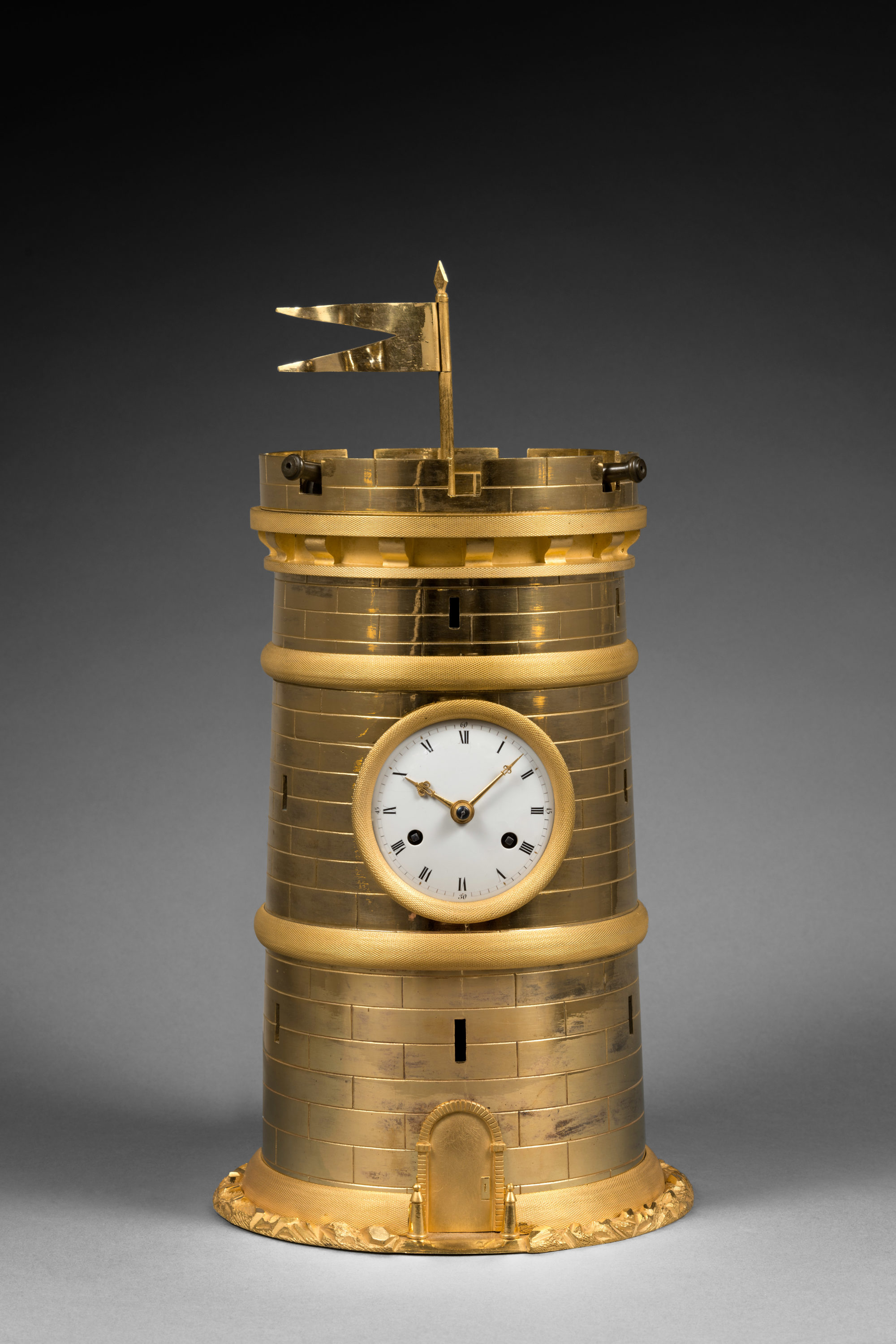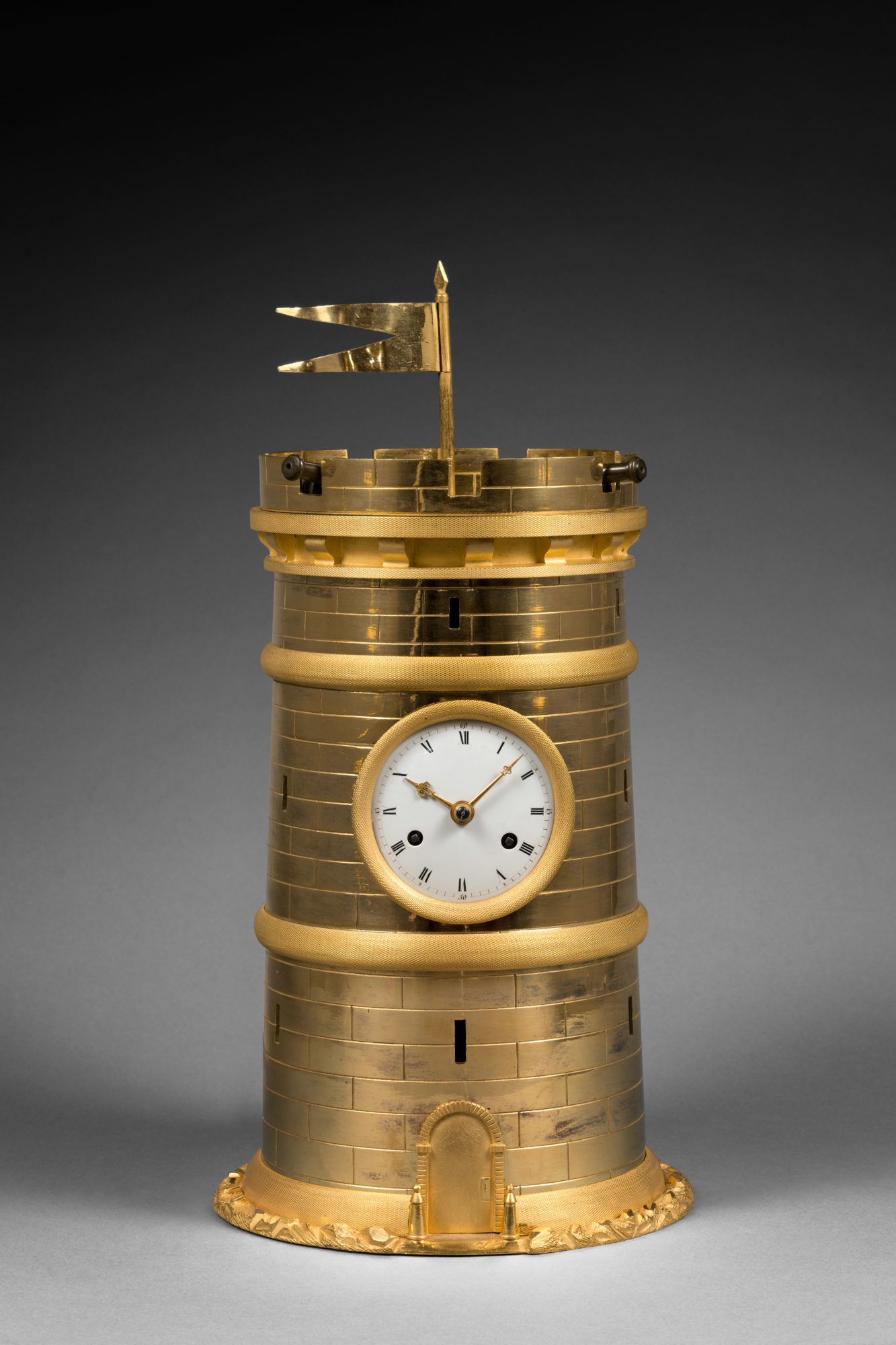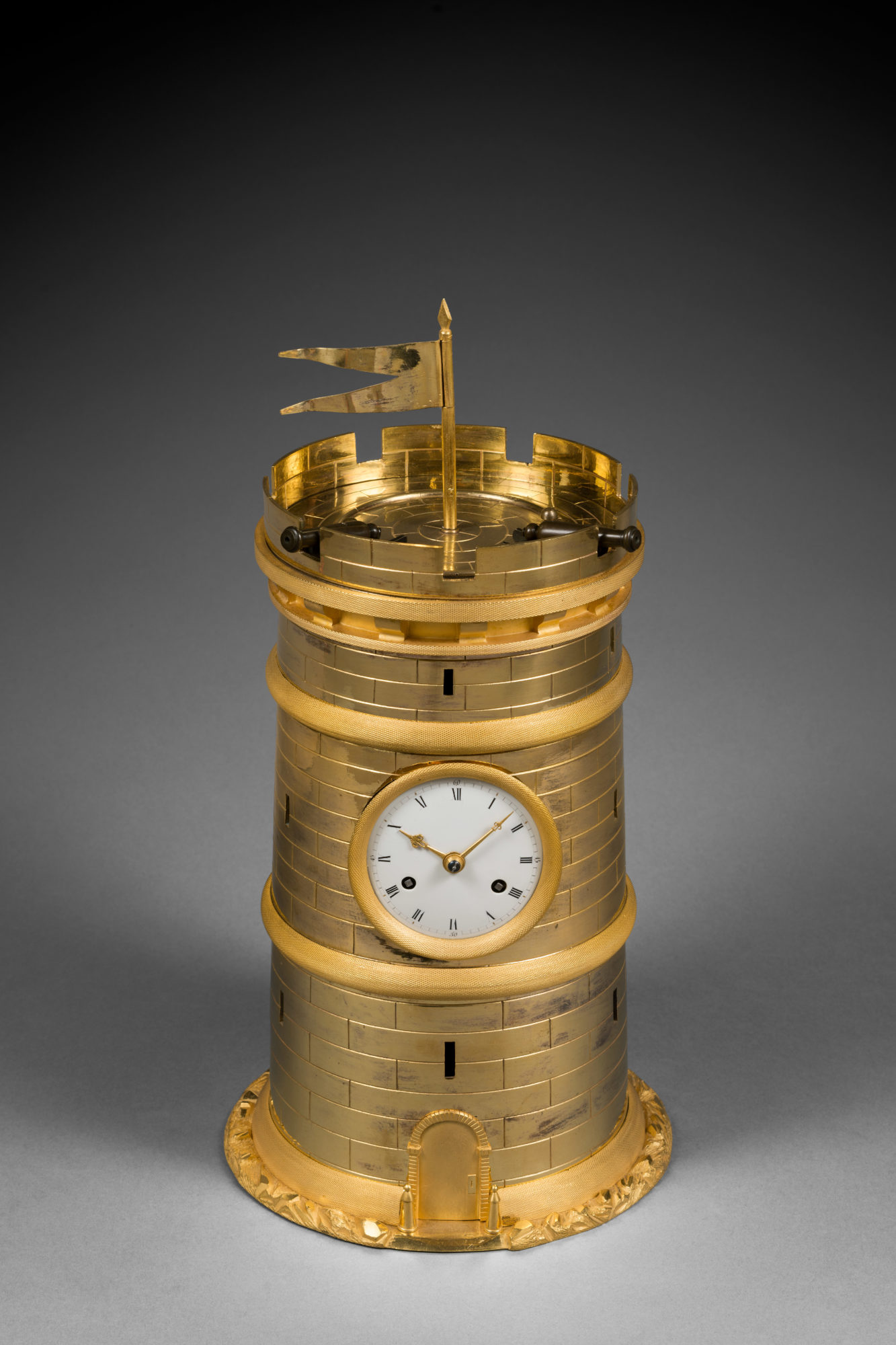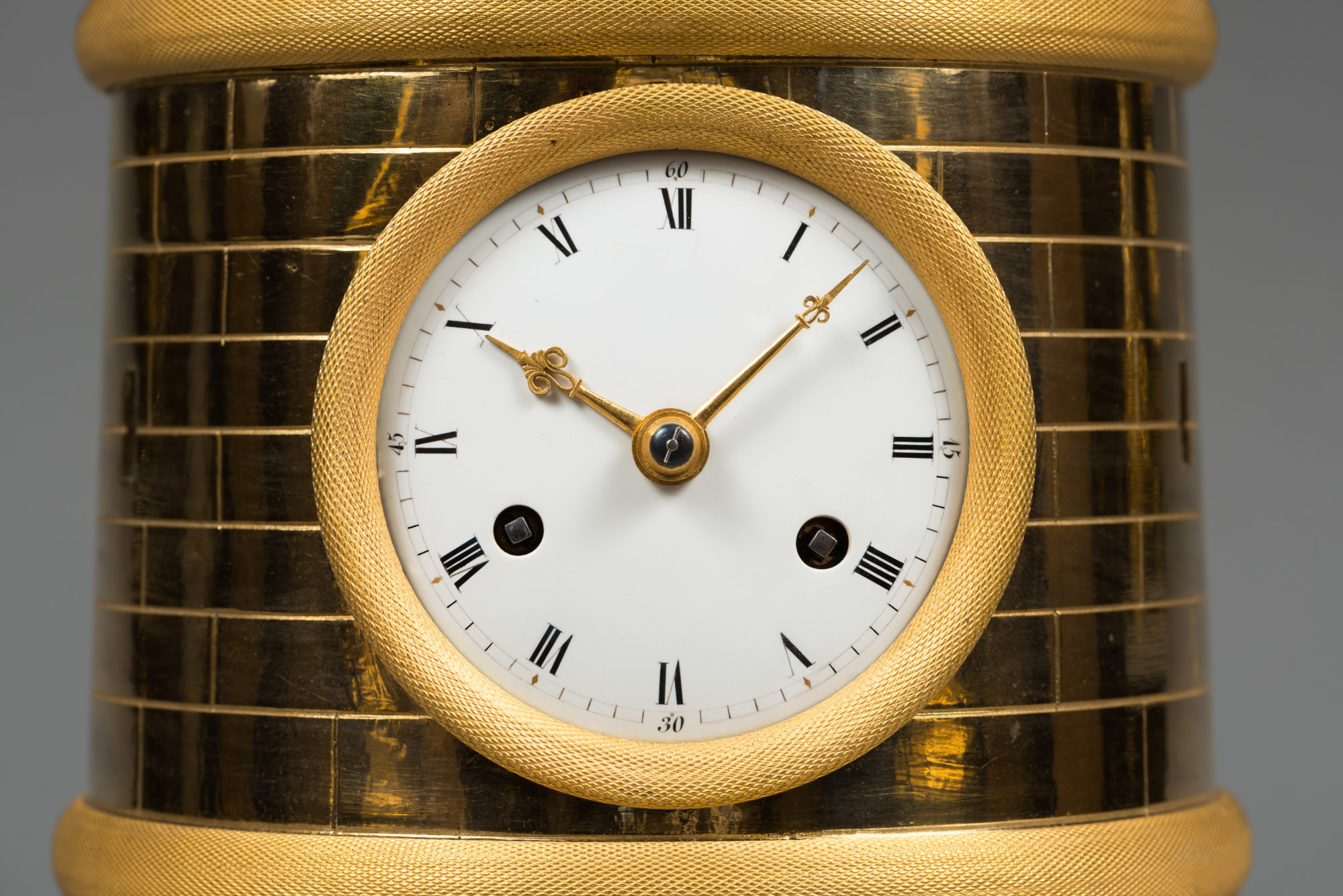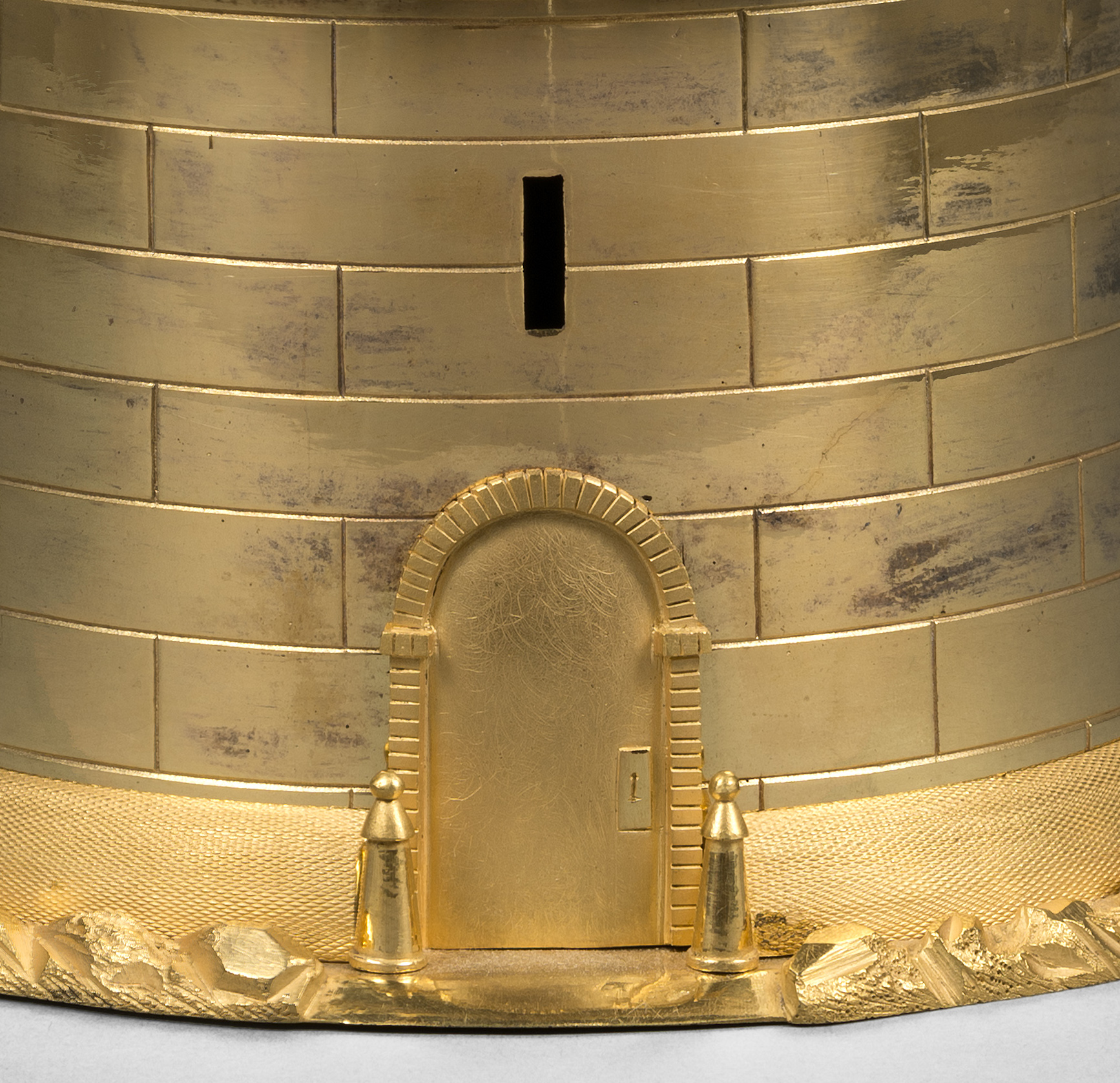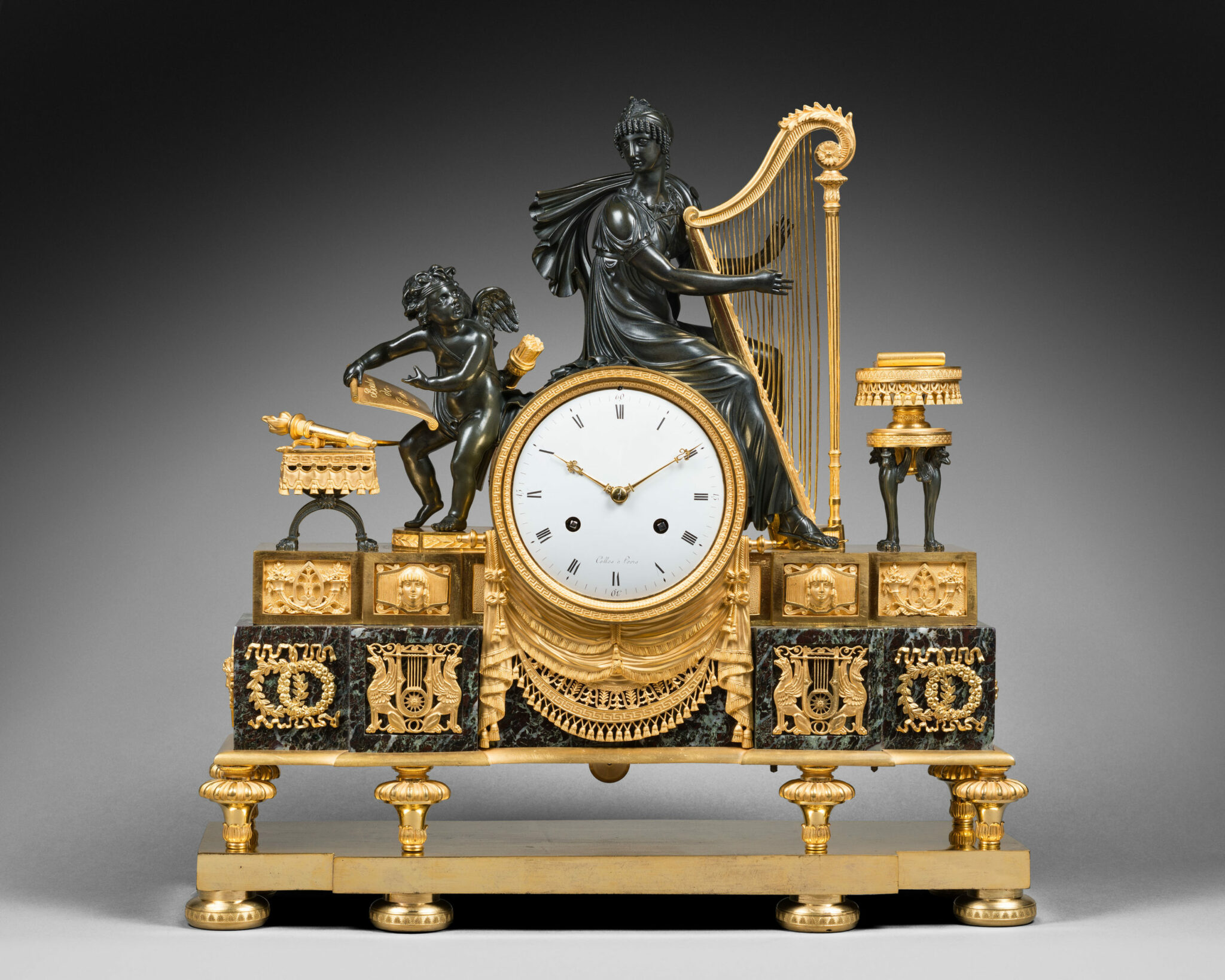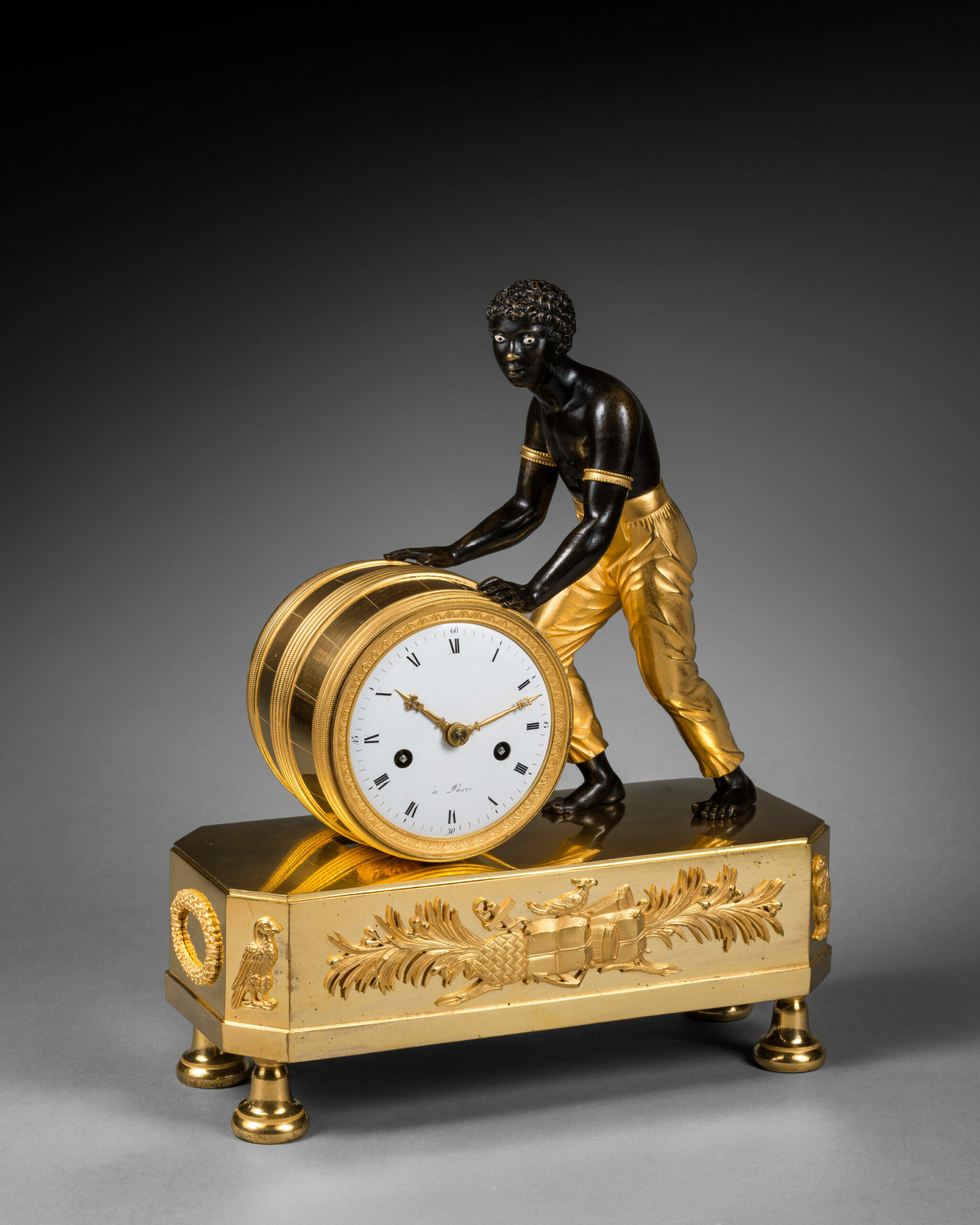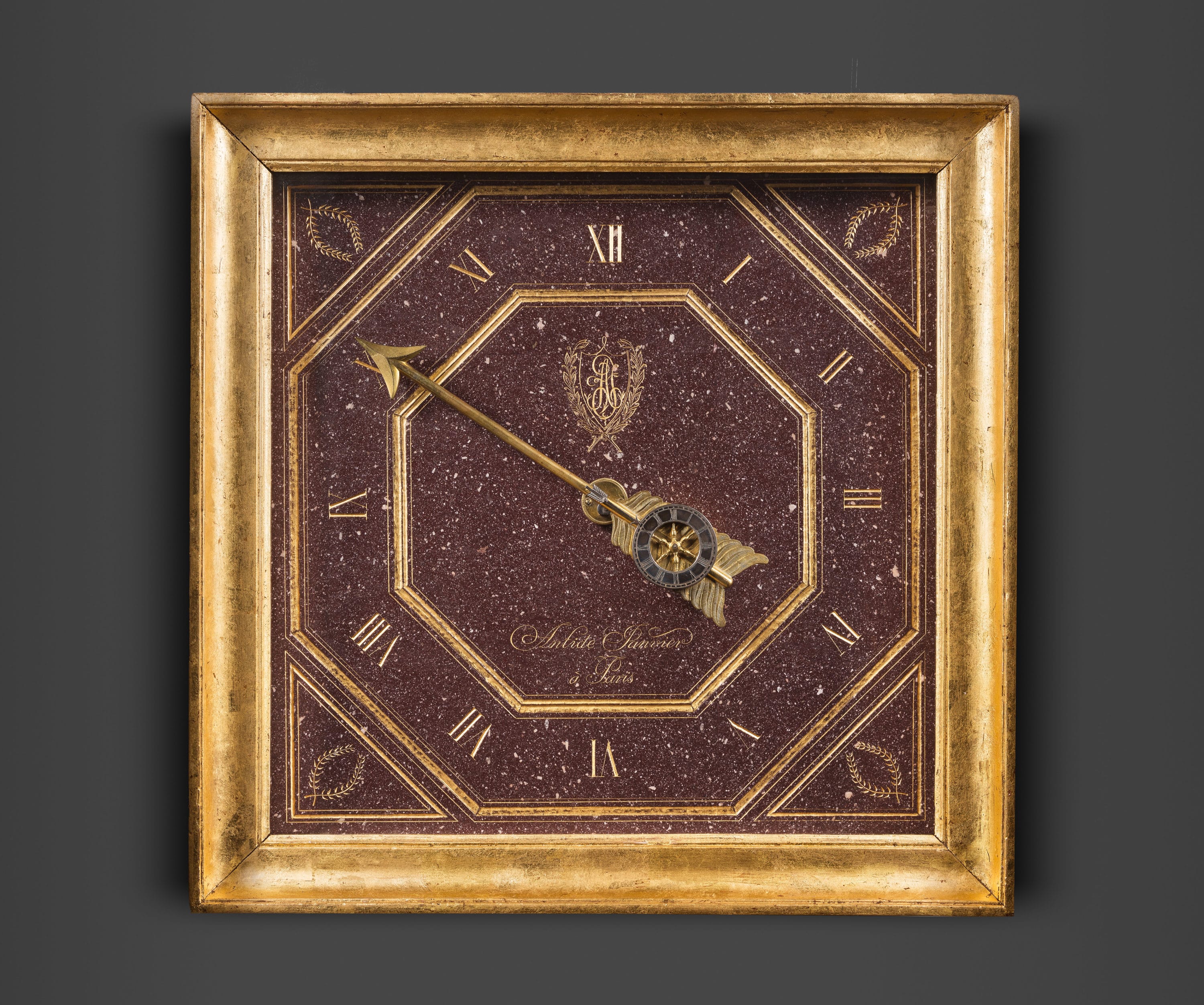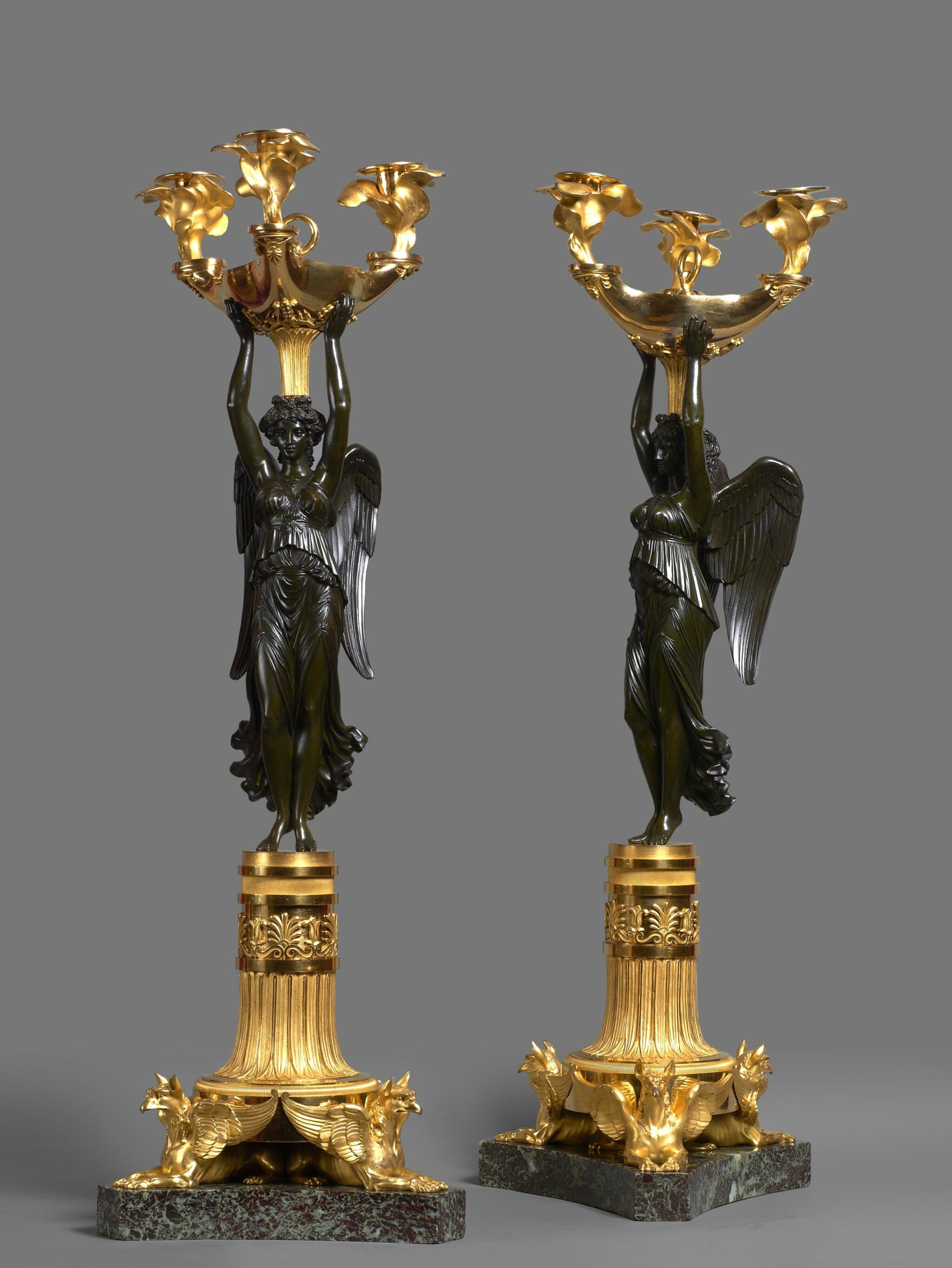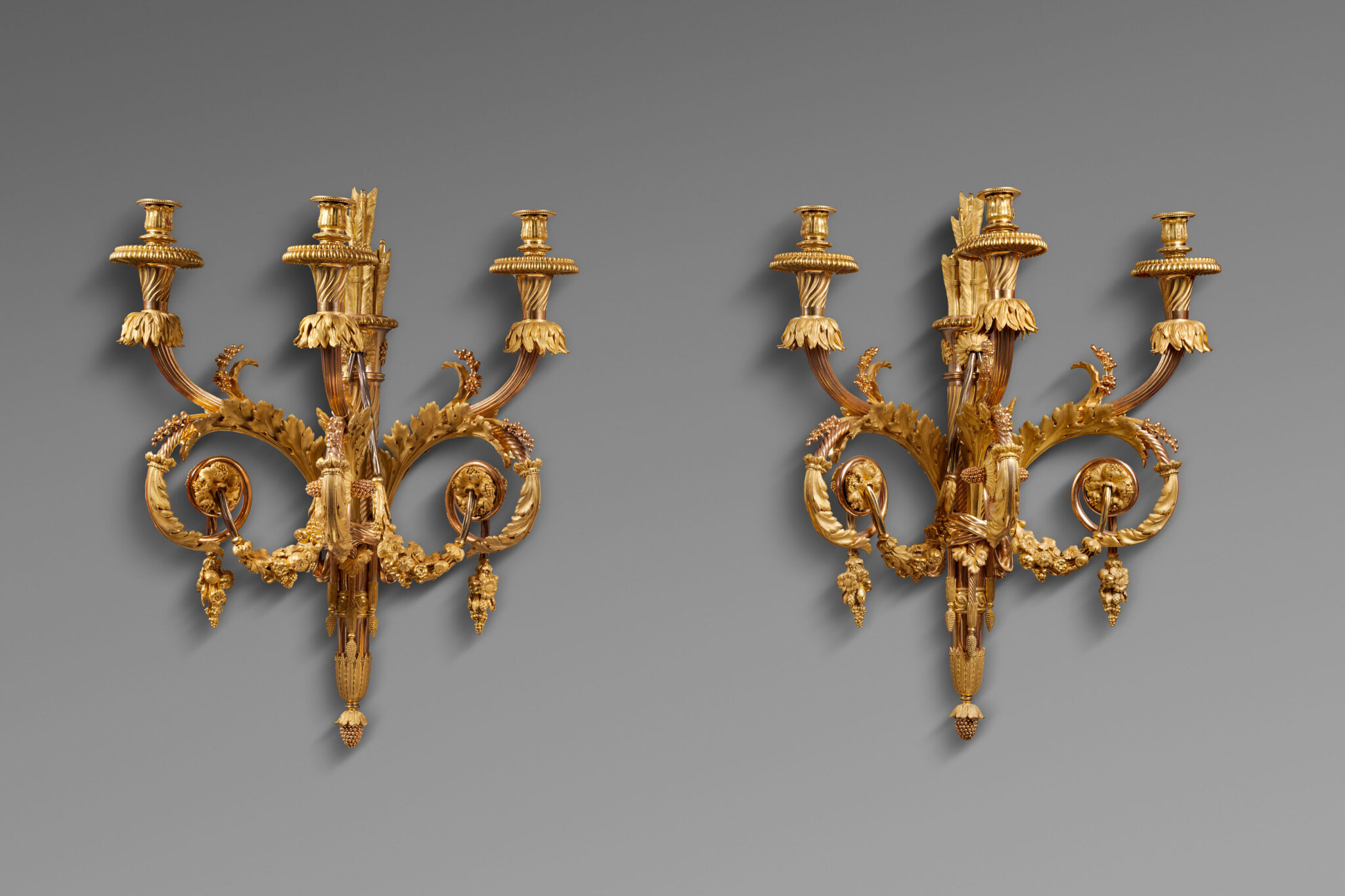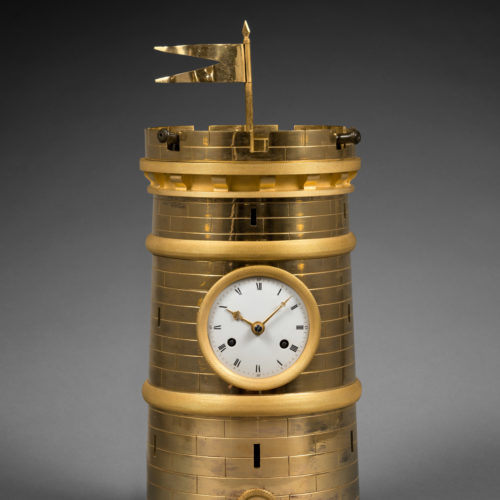Rare Gilt and Patinated Bronze Mantel Clock Likely Made to Commemorate the Victory of the Battle of Wagram
“The Tower of Markgrafneusiedl”
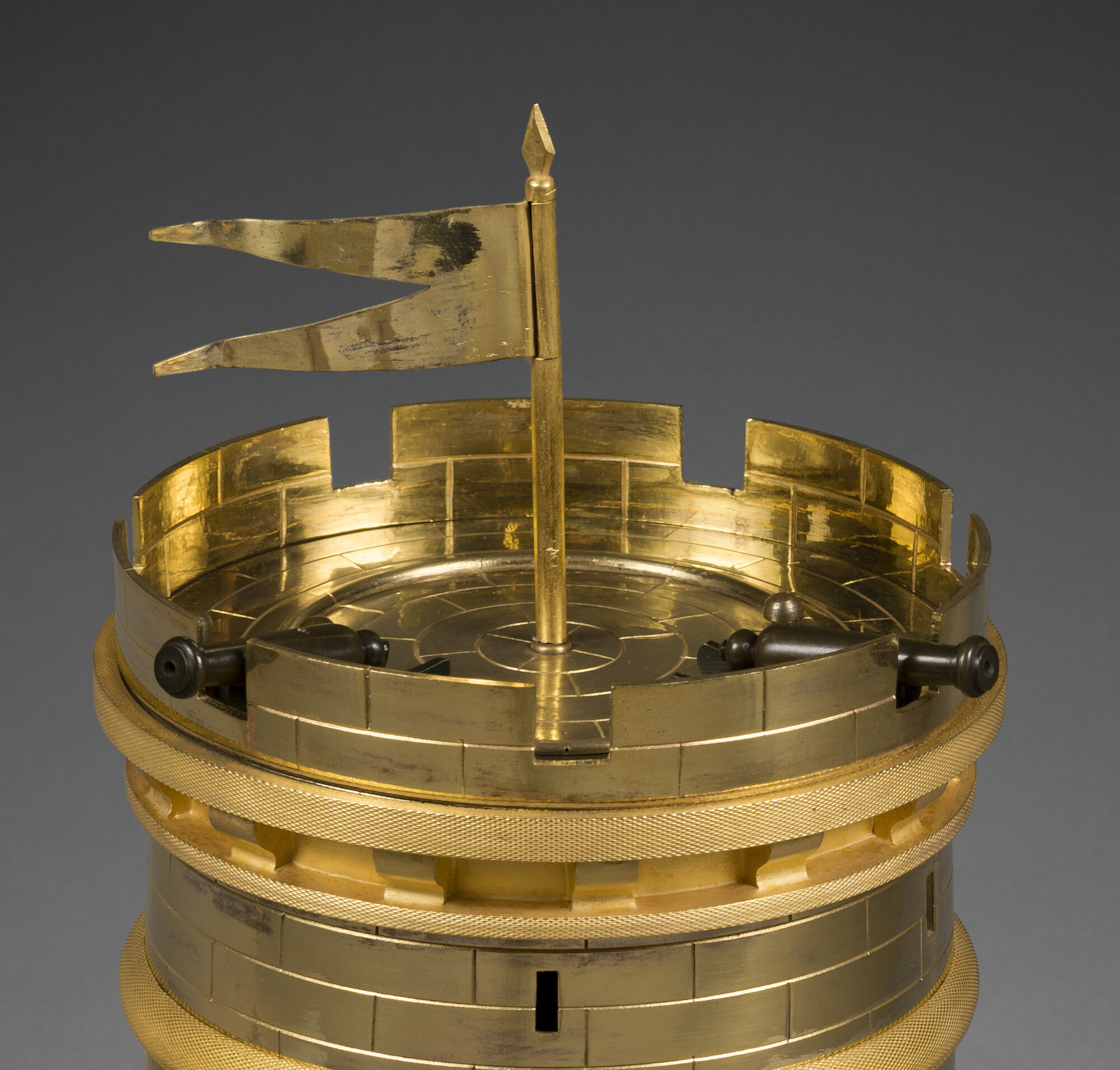
Attributed to Pierre-Philippe Thomire
Paris, Empire period, circa 1810
The round white enamel dial indicates the Roman numeral hours and the Arabic numeral fifteen-minute intervals by means of two pierced gilt bronze hands. The movement is housed in a finely chased gilt and patinated bronze case with matte and burnished finishing. It takes the form of a medieval tower that rests on a naturalistic rocky terrace. The door, which is flanked by two posts, has a chased doorframe with an arched pediment. The tower is entirely chased to imitate bricks, with arrow-slit windows. It is further adorned by engine turning, including the dial’s bezel. The upper portion of the clock is crenellated, with two cannons on carriages fitted into the crenellations. The cannon balls sit on a brick terrace centered by a flagpost.
Discover our entire collection of antique french empire mantel clocks for sale online or at the gallery.
La Pendulerie is the specialist in fine and rare antique clocks, based in Paris.
The remarkable composition of the present clock appears to be related to the Battle of Wagram, one of the most famous Napoleonic battles, in which France was pitted against Imperial Austria. On the first day of fighting the French and Austrian forces appeared to be evenly matched, but on July 6, 1809 Marshal Davout heroically seized the Markgrafneusiedl Tower, a dominant post from which the Austrian artillery had intensely bombarded the French forces. Thus the French troops gained an advantage over their adversary and, were able to gain a strong foothold on the Wagram plateau. This episode of military heroism, of the type that was greatly appreciated by the Emperor, was greeted with enthusiasm in Paris. It is therefore not surprising that a renowned bronze caster would create an image of the fortified tower that had been taken from the enemy and marked the moment the French gained the upper hand in the battle. As was often the case in the Parisian decorative arts at the time, this artistic initiative was imitated by others. Here, it takes the form of a rare horological model, since to the best of our knowledge this is the only such example known. The exceptional quality of its chasing and gilding support an attribution to Pierre-Philippe Thomire, who may have made a comparable case circa 1820, depicting a cylindrical tower surmounted by an orrery, with a movement by clockmaker François Ducommun; two such examples are known. The first is illustrated in P. Heuer and K. Maurice, European Pendulum Clocks, Decorative Instruments of Measuring Time, Munich, 1998, p. 327, fig. 727. The second is in the Musée d’horlogerie in La-Chaux-de-Fonds (see M. Favre, Musée d’Horlogerie de La-Chaux-de-Fonds, undated, p. 75).
Pierre-Philippe Thomire (1751 - 1843)
Pierre-Philippe Thomire was the most important Parisian bronzier of the last quarter of the 18th century and the first decades of the following century. Early on in his career he worked for Pierre Gouthière, ciseleur-fondeur du roi, and toward the mid-1770’s began working with Louis Prieur. He later became one of the bronziers attached to the Manufacture Royale de Sèvres, creating the bronze mounts for most of the important creations of the day. After the Revolution, he purchased the stock of Martin-Eloi Lignereux, thus becoming the most important suppliers of furniture bronzes for châteaux and Imperial Palaces. In addition, he worked for a wealthy private clientele, both French and foreign, including several of Napoleon’s Marshals. Thomire retired in 1823.
